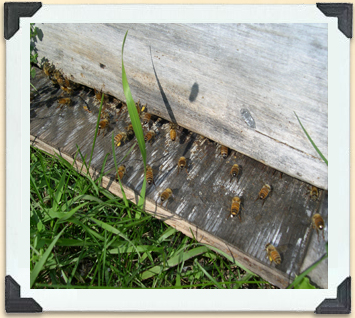Life in a Hive

These bees are busy fanning and communicating with each other on the hive landing board.
© University of Manitoba
Fanning
At some point, as a means of transforming nectar (which is 70 percent water) into honey (which is 17 percent water), worker bees fan their wings at top speed. As the air circulates, the moisture evaporates.





